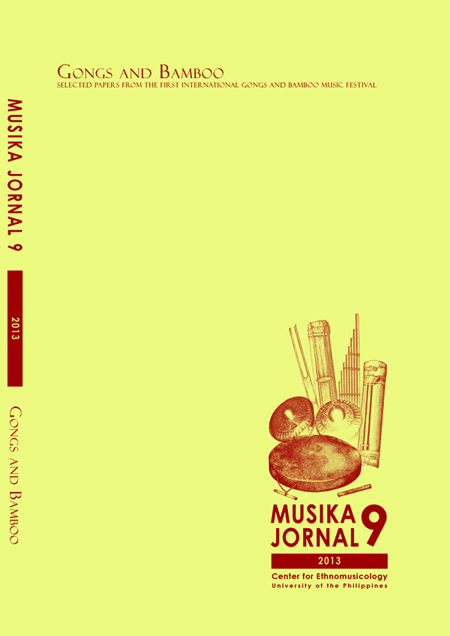<em>Santú</em>: Synchronizing Rhythm , Speech, and Poetry in the gong and bamboo instruments of Panay Bukidnons
Abstract
This paper explores the concept of santú, or synchronization, in forming gong and bamboo music from rhythmic, speech and poetic sources among the Panay Bukidnon, the highland people of Panay in the Philippines. Building poetry from speech patterns, which involves rhythmic play, feeds into the basic understanding of the connection between speech/language, chanting, and instrument playing. Furthermore, the linkage between language and instrumental sounds and playing depends on understanding the nuances of limog – sound and tone colors. The linkage to tone nuances helps in determining points where music and dance can synchronize and eventually realize sibod, an ideology rich in meanings that points toward balance and transcendental connections to other realms. Santú is one of the key concepts in sibod and its meaning relates to connectedness as well as to performing in time together. Given its essentially musical and rhythmic meanings, this concept forms a keystone upon which gong and bamboo instrumental performance balances.
Feliza Castor, a Panay Bukidnon elder, demonstrates the act of synchronization and indicates the fulfillment of it when she says “Ga-Sibod” (It’s working), sometimes adding “Da!” meaning, “There you are!” She puts the rhythm into action, but she would first enunciate its rhythmic basis through linguistic mnemonics, speech fragments serving as the rhythmic basis in Panay Bukidnon music and dance. Even after achieving santú individually one must consider, “How does synchronization happen when 106 an individual performs with other players?” Santú is a motion and process that links individual work to collective action where one establishes a goal beyond “self-synchrony.” De Priest (2003) sees synchronization as a kind of thinking involved in the process of one’s ‘re-authoring’ of the self to harmonize with others. I also ask: “How does speech become instrumental in performance where there is no mastery of that specific language?” In other words, how does a person who is not Panay Bukidnon, or a Kinaray-a speaker, learn to play this music meaningfully? This paper speculates on the ways of applying rhythmic and linguistic segmentation and accentuation so as to attempt an initial learning of gong and bamboo playing in the Panay Bukidnon style, especially for persons who did not grow up in this tradition. It is in bridging the local knowledge with that of an “other” (initiate) that the creation of an intercultural dialogue is made possible for the pursuit of larger participation and understanding.


